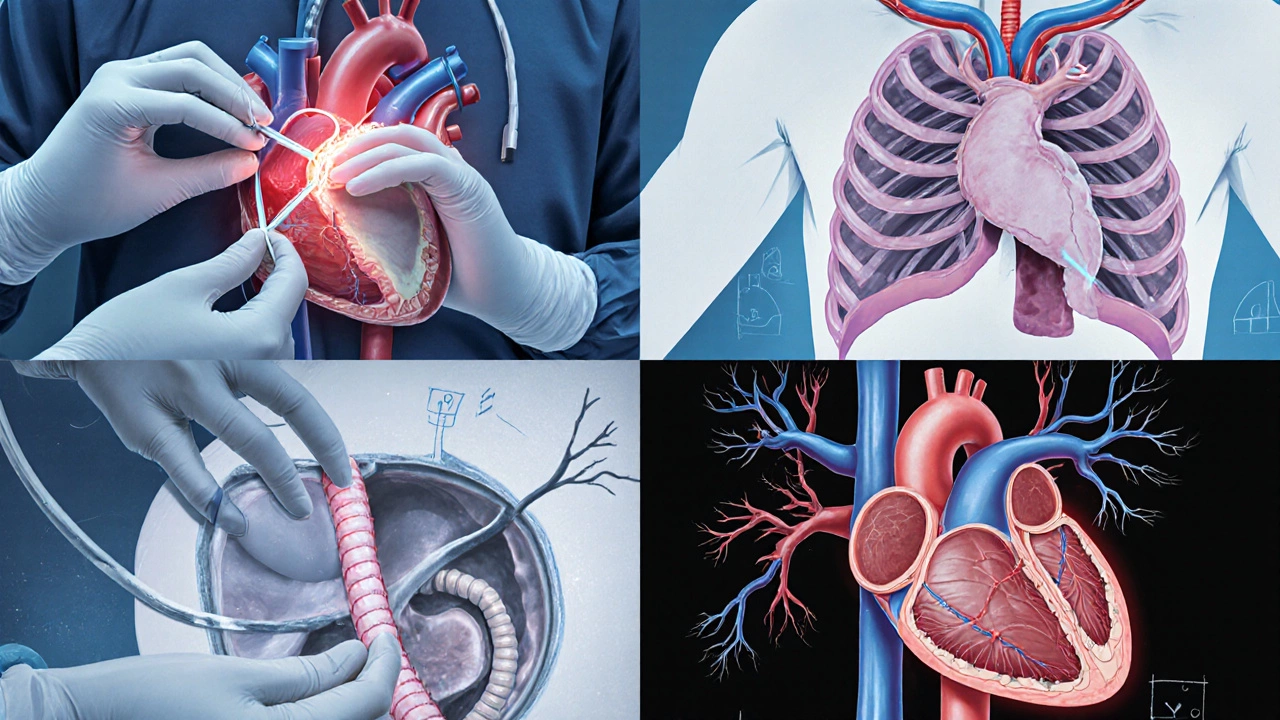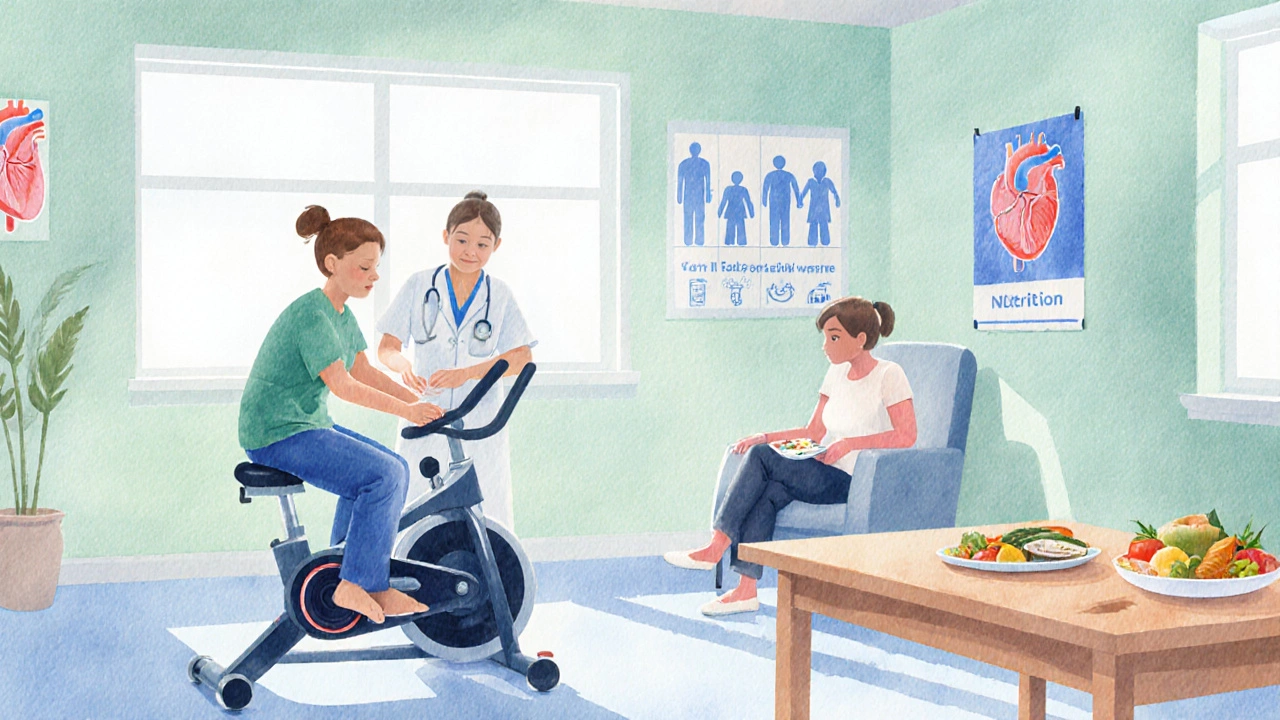Personalized Recovery Timeline Estimator
Recovery Timeline Calculator
Estimate your personalized recovery timeline based on surgery type, age, and health factors.
Your Personalized Recovery Estimate
Enter your information to see your estimated recovery timeline.
Imagine waking up after a life‑saving operation, only to find the road back to normal feels like climbing a mountain. Some surgeries push the body’s healing limits so far that patients wonder whether the procedure was worth the pain and downtime. In this guide we’ll break down which operations are truly the toughest to bounce back from, why the recovery can be grueling, and what you can do to smooth the journey.
What makes a surgery "hard" to recover from?
Recovery difficulty isn’t just about the size of the incision. It’s a mix of how invasive the procedure is, how much the heart or major vessels are disturbed, and the risk of complications that can knock you off track. Factors that turn a routine post‑op period into a marathon include:
- Extended time on a heart‑lung machine, which can cause inflammation and organ stress.
- Major changes to blood flow or heart rhythm that require intensive monitoring.
- Heavy reliance on blood thinners, which increase bleeding risk and limit activity.
- Pre‑existing conditions like diabetes or chronic lung disease that slow wound healing.
When all these pieces line up, the recovery can stretch from weeks into months, and the patient may need long‑term rehabilitation.
The toughest contenders
Below are the surgeries that most experts label as the hardest surgery to recover from, especially when they involve the heart.
Coronary artery bypass grafting (CABG) is a procedure where surgeons create new pathways for blood to bypass blocked coronary arteries
In a typical CABG, a vein from the leg or an artery from the chest is sewn onto the heart to reroute blood flow. The operation usually lasts 3-5 hours and requires the patient to be on a heart‑lung machine for most of it. Post‑op, patients often spend 2-4 days in the intensive care unit (ICU) and another week on the general ward. Full recovery can take 6-12 weeks, but lingering fatigue and chest discomfort may persist for up to six months.
Complications such as sternal wound infection, postoperative atrial fibrillation, or graft failure can further delay healing.
Heart valve replacement is a surgery that removes a diseased heart valve and implants a mechanical or biological prosthetic valve
Whether it’s the aortic, mitral, or tricuspid valve, replacement surgery involves opening the heart and often using the heart‑lung bypass. Mechanical valves demand lifelong anticoagulation, while biological valves may wear out sooner, requiring future re‑operations. Hospital stays average 5-7 days, but the return to normal activity usually spans 8-12 weeks. Patients report a prolonged “brain fog” due to micro‑emboli and prolonged anesthesia.
Key risks include prosthetic valve thrombosis, bleeding from anticoagulants, and infection of the prosthetic material (endocarditis).
Aortic aneurysm repair is a surgical correction of a bulging section of the aorta, often performed with a graft or stent
Repairing a thoracic or abdominal aortic aneurysm typically demands a large incision, deep tissue dissection, and sometimes hypothermic circulatory arrest. The surgery can last 4-8 hours, and the risk of spinal cord injury leading to paralysis is a serious concern. Hospitalization lasts 7-10 days, while full recovery can stretch beyond 4 months, especially if the patient experiences back pain or reduced mobility.
Complications such as graft infection, renal failure, or persistent hypertension are common hurdles.
Heart transplant is a procedure that replaces a failing heart with a donor organ
Arguably the most complex cardiac operation, a heart transplant involves an extensive surgical team, precise timing, and delicate immunological management. Recipients spend an average of 2-3 weeks in the ICU while their bodies adjust to the new organ and anti‑rejection drugs. Even after discharge, the journey to a "normal" life can span 6-12 months, with strict medication schedules and frequent biopsies.
Major post‑op challenges include rejection episodes, infections due to immunosuppression, and chronic kidney disease from medication toxicity.
Cardiac rehabilitation is a structured program of exercise, education, and counseling designed to help patients recover after heart surgery
While not a surgery itself, cardiac rehab is the bridge that turns a grueling post‑op period into a sustainable lifestyle. It typically begins 2-4 weeks after discharge and lasts 12 weeks or longer. Patients who skip or limit rehab often experience slower functional gains, lingering chest tightness, and higher readmission rates.
Recovery timeline comparison
| Procedure | Hospital stay (days) | Full recovery time | Common major complications |
|---|---|---|---|
| Coronary artery bypass grafting (CABG) | 5-7 | 6-12 weeks | atrial fibrillation, wound infection, graft occlusion |
| Heart valve replacement | 5-7 | 8-12 weeks | bleeding, prosthetic thrombosis, endocarditis |
| Aortic aneurysm repair | 7-10 | 4-6 months | spinal cord injury, renal failure, graft infection |
| Heart transplant | 14-21 | 6-12 months | rejection, infection, drug‑induced kidney damage |

Key factors that affect recovery
Even within the same procedure, patients experience wildly different timelines. Here’s what usually drives the variance:
- Age and overall fitness: Younger, active individuals rebuild muscle and cardiovascular capacity faster.
- Pre‑existing conditions: Diabetes, chronic obstructive pulmonary disease (COPD), and obesity raise infection and wound‑healing risk.
- Type of anesthesia: Long‑acting agents can cause prolonged grogginess and respiratory depression.
- Post‑op care quality: Access to a dedicated ICU, skilled nurses, and early mobilization protocols shortens stay.
- Medication adherence: Skipping anticoagulants or immunosuppressants can trigger life‑threatening events.
Tips to improve recovery after tough surgeries
- Start moving early: Gentle breathing exercises and sitting up within the first 24 hours reduce pneumonia risk.
- Follow nutrition plans: Protein‑rich meals (lean meat, beans, dairy) support tissue repair; avoid excess sodium to limit swelling.
- Stay on schedule with medications: Use pill organizers or smartphone alerts to never miss a dose of blood thinners or immunosuppressants.
- Engage in cardiac rehab: Structured aerobic sessions (e.g., stationary bike) improve heart efficiency and cut fatigue.
- Monitor signs of complications: Fever > 38°C, worsening chest pain, swelling of the legs, or sudden shortness of breath demand immediate medical attention.
- Prioritize sleep: Aim for 7-9 hours; a good night’s rest boosts immune function and decreases pain perception.
- Lean on support: Family help with chores, grocery runs, or transportation to follow‑up visits reduces stress and keeps you focused on healing.

When to seek help: warning signs that recovery isn’t on track
Even with the best care plan, complications can pop up. If you notice any of these red flags, call your surgeon or head to the emergency department:
- Persistent fever above 38°C lasting more than 48 hours.
- New or worsening chest pain that doesn’t ease with prescribed pain meds.
- Swelling or redness around the surgical scar, especially if it’s warm to the touch.
- Shortness of breath that worsens when lying flat.
- Sudden weakness or numbness in the legs, which could signal spinal cord issues after aortic surgery.
- Unexplained bruising or bleeding from gums, nose, or IV sites (possible over‑anticoagulation).
Quick intervention can prevent minor setbacks from turning into major setbacks.
Frequently Asked Questions
How long does it usually take to return to work after a heart transplant?
Most patients can consider light office work after 3-4 months, provided they’re on stable immunosuppression and have cleared their cardiology follow‑up. Heavy physical jobs may require 6-12 months of gradual re‑introduction.
Is it normal to feel fatigued six weeks after valve replacement?
Yes. The heart is still adapting to the new valve, and the body is healing the sternotomy incision. Fatigue usually eases after the first 8-12 weeks, especially with regular cardiac rehab.
Can I drive myself home after CABG?
Most surgeons advise against driving for at least 4 weeks post‑CABG. You need full control of your limbs, no strong pain medication, and stable heart rhythm before getting behind the wheel.
What role does the ICU play in recovery?
The intensive care unit provides round‑the‑clock monitoring of heart rhythm, blood pressure, and oxygen levels. Early detection of arrhythmias or bleeding in the ICU dramatically cuts the risk of long‑term complications.
Are there alternatives that have shorter recovery times?
For some blockages, percutaneous coronary intervention (angioplasty with stent) offers a much quicker return-usually a few days. However, it’s not suitable for multi‑vessel disease or complex anatomy where CABG remains the gold standard.


 Health and Wellness
Health and Wellness




